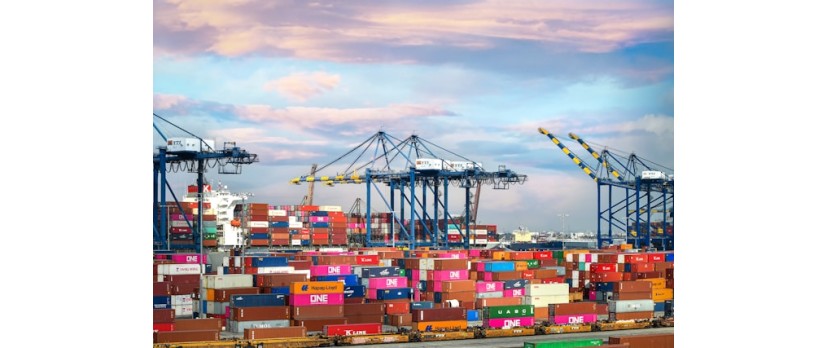It's no secret: customer expectations have skyrocketed in recent years.
They're not just after good deals and smooth shopping experiences anymore.
Today, modern consumers also expect deep personalization, tighter security, and fast logistics.
The good news is, ecommerce businesses have generally done a good job at meeting these expectations. In fact, a study revealed that 81% of customers plan to maintain or even increase their online purchases from 2023 moving forward mainly for the following reasons:
Yes, three of those reasons directly benefit from good logistics, namely free shipping, product availability, and faster delivery.
In this post, we'll take a deep dive into the role of logistics in driving customer experience and maximizing profitability for ecommerce businesses.
Let's get started.
Why Logistics Matters to Customer Experience
Logistics is more important to the customer experience than most people think.
For those who are just getting started with ecommerce, logistics pertains to the processes and systems that manage the movement of goods, services, and information from order placement to post-sales service requests.
To better understand ecommerce logistics, let's break it down into four key areas:
Inventory Management — The systems involving the procurement, organization, monitoring, and replenishment of goods. Modern inventory management relies on the use of software to speed up or automate essential tasks as well as capitalize on advanced features, like demand forecasting and automated reordering.
Order Fulfillment and Warehousing — In ecommerce, warehousing focuses on the physical aspects of managing your stock. This encompasses monitoring stock levels, reordering products, managing storage solutions, packaging, and fulfilling orders.
Shipping and Delivery — This pertains to the movement of goods from your warehouse to the customer's doorstep, which is arguably the most important aspect of ecommerce for both customers and sellers. Modern logistics also involve route optimization, real-time tracking, and collaboration tools with shipping carriers.
Returns Management — Another crucial aspect of ecommerce logistics, especially relating to the customer experience (AKA "reverse logistics). This includes establishing clear return policies, processing returned items (e.g., inspection, repair, and recycling), and refunding payments or preparing replacements.
By understanding the components of ecommerce logistics, it should be easy to extrapolate how missteps in these areas could be potentially disastrous to the customer experience:
1. Ensuring Timely Deliveries
The faster their orders arrive, the more satisfied customers will be with your service.
Keep in mind that we're in the age of instant gratification. If your ecommerce business can't cater to delivery windows that modern consumers expect, you're pretty much hand-delivering them to your competitors.
Statistics show that 92% of ecommerce customers factor delivery times into their online purchase decisions. And for 86% of these consumers, a "fast delivery" only takes two days or less.
Of course, shipping delays are a fact of doing business online. While you can't completely prevent delays from ever happening, there are a few things you can do to reduce their occurrence, like:
Working with fulfillment centers
Automate inventory management and warehousing tasks
Reassess your delivery partners
Offer flexible shipping options
Invest in AI-powered route optimization tools
2. Preventing Damage in Transit
If there's one thing customers find more frustrating than slow deliveries, it's receiving products that were damaged during transit.
Apart from the headache of dealing with (rightfully) angry customers, replacing or refunding damaged products also costs money often higher than your profit margin for the initial sale.
You're not just replacing their order with a fresh unit. You also have to cover the costs of reverse logistics, including return shipping, inspection, and handling.
To add insult to injury, product damage in transit also harms the customer's loyalty and trust. This can quickly get out of hand, especially if the customer decides to publish a review and dissuade others from doing business with you.
Now, the liability for product damage while shipping is shared between the seller and the carrier. If you can gather enough evidence that the carrier is at fault, consider filing a freight claim to receive compensation.
The best approach, however, is prevention.
Make sure your packing lines are optimized and tailored to the type of goods sold. Don't skimp on protective materials, like bubble wrap, packing peanuts, and air cushions, especially when shipping high-value items.
3. Enhancing Responsiveness to Customer Queries
An important part of modern ecommerce logistics is making sure customers are kept in the loop when it comes to their order status.
Remember that everything that happens between the initial sale and when the product lands in the customer's hands (and beyond) is part of the experience. That includes waiting for the package to arrive.
A typical strategy is implementing delivery tracking tools that customers can access themselves. Not only will this enhance the customer experience, it's also a great way to reduce the back-and-forths between customers who were patiently waiting for their orders.
Reputable brands and shipping carriers do it well with slight differences in implementation.
Take this into consideration when choosing a Third-Party Logistics (3PL) provider, as not all of them have real-time delivery tracking available.
For example, OpenCart lets you build a straightforward form that lets customers track their shipment by entering their tracking number and specifying the courier.
4. Expanding Product Availability
A well-planned ecommerce logistics strategy ensures products are actually available for customers who need them.
For one, seeing an "out of stock" sign is an experience-killer for customers who are already in a shopping mood. But if you plan your logistics and inventory management right, you should always be able to meet demand with enough supply.
Sure, some brands intentionally make scarcity a part of their branding, and releasing limited-edition versions or strategically controlling supply will definitely generate that much-needed urgency. Regardless, it often leads to a bad customer experience for the broader markets.
Ecommerce logistics also determines which regions you can sell and ship to. And while international shipping is attainable to any ecommerce brand with the right logistics partner, it's not always a practical strategy in terms of local demand, shipping costs, and infrastructure-wise.
5. Managing Costs
Maximizing cost-efficiency is, of course, another critical function of ecommerce logistics.
It's not just about optimizing your costs to fatten your margins with every sale. From a customer's perspective, robust logistics management also includes flexible shipping options.
Remember, not every customer is willing to pay a premium for fast and reliable shipping.
Data from McKinsey reveals that U.S. customers now prefer getting better deals through lower or free shipping over faster deliveries.
While most courier services and 3PL providers already offer flexible shipping rates, you're in charge of informing customers and simplifying the selection process. As a rule of thumb, make shipping options (and their costs) clear and visible before checkout.
6. Streamlining the Return Process
Finally, good logistics streamlines the return process for customers who have problems with their purchase.
Whether it's the wrong item, a defective product, or a product damaged in transit, providing these customers with an easy return process is the least you can do to salvage their experience. The same applies to products under warranty and eligible for repair or replacement.
Not only will implementing a painless return process improve the customer experience, it's also a reliable way to build trust and loyalty.
8 Ecommerce Logistics Strategies to Elevate the Customer Experience
Understanding the impact of logistics on the customer experience is the first step towards a more optimized and profitable flow of products between you and your customers.
In addition to the strategies above, here are additional logistics tips that will take the customer experience to the next level:
Keep transparency top of mind — Whether you're creating product pages or designing the checkout experience, prioritize clarity and transparency on what customers should expect during (and after) shipping.
Invest in quality 3PL software — Top-tier 3PL software consolidates everything you need to smooth logistics operations, including warehouse management, order processing, delivery tracking, and even reverse logistics.
Adopt a flexible last-mile delivery strategy — Explore local logistics partners in high-demand areas to expedite deliveries to high-value customers.
Automate notifications — Set up automated messages via email or SMS to keep customers up-to-date on their order status.
Consider using AI — Building your own AI chatbot enables instant support for customers who have questions regarding refund windows, returns, troubleshooting, and general tips about your product.
Listen to customer feedback — Open up multiple feedback channels to retrieve valuable insights and experience-based suggestions to improve your logistics.
Implement a free shipping threshold — reward and enhance the experience of your big spenders by offering free shipping once they hit a certain price threshold.
Use data analytics for demand forecasting — Look for capable 3PL solutions or dedicated inventory management platforms with demand forecasting or predictive analytics tools (even better if they come with reorder automation tools).
Conclusion
Ecommerce logistics is one of the pillars of creating exceptional customer experiences.
Regardless of the product's quality and value for money, logistics influence much of the shopping experience — from product availability all the way to post-sales service.
The guide above should help you understand what it takes to iron out your logistics operations and enhance the customer experience. Remember, ecommerce success is not just about generating more sales, but also building long-lasting customer relationships that lead to repeat business.
Good luck!


Login and write down your comment.
Login my OpenCart Account